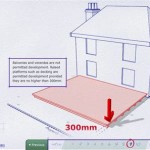Outdoor Patio Design Ideas: Crafting the Perfect Extension of Your Home
The outdoor patio represents a valuable extension of the home, offering a space for relaxation, entertainment, and connection with the natural environment. Designing an outdoor patio requires careful consideration of various factors, including available space, budget, desired aesthetic, and intended usage. A well-designed patio seamlessly blends with the existing architecture and landscape, creating a cohesive and inviting outdoor living area.
The following explores a range of outdoor patio design ideas, focusing on fundamental aspects like materials, layout, furniture selection, and the incorporation of elements that enhance comfort and functionality. These ideas aim to provide a comprehensive guide for transforming a patio into a personalized and appealing outdoor retreat.
Material Selection: Setting the Foundation for Durability and Style
The choice of materials is pivotal to the overall look and longevity of an outdoor patio. Material selection should consider factors such as weather resistance, maintenance requirements, and aesthetic compatibility with the surrounding environment. Several popular options exist, each offering distinct advantages and disadvantages.
Concrete Pavers: Concrete pavers are a versatile and cost-effective option for patio surfaces. Available in a wide array of shapes, sizes, colors, and textures, concrete pavers can mimic the appearance of natural stone at a fraction of the cost. They are durable, resistant to cracking, and easy to install. Regular cleaning and sealing can help maintain their appearance and prevent staining.
Natural Stone: Natural stone, such as flagstone, slate, and limestone, offers a timeless and elegant aesthetic. Each piece of natural stone possesses unique variations in color and texture, creating a visually interesting and organic surface. Natural stone is highly durable and weather-resistant, making it a long-lasting investment. However, it can be more expensive than concrete pavers and may require professional installation.
Brick: Brick patios exude a classic charm and offer excellent durability. Brick is a versatile material that can be laid in various patterns, adding visual interest to the patio surface. It is relatively low-maintenance and resistant to fading. However, brick can become slippery when wet, and it may require occasional weeding between the joints.
Composite Decking: While traditionally used for decks, composite decking materials can also be used to create a patio surface. Composite decking is made from a blend of wood fibers and recycled plastic, offering a low-maintenance and weather-resistant alternative to natural wood. It is resistant to rot, insects, and fading, making it an ideal choice for areas with harsh weather conditions. Composite decking is available in a variety of colors and finishes, mimicking the look of natural wood.
Gravel: For a more rustic and informal look, gravel can be used as a patio surface. Gravel is a cost-effective option that allows for excellent drainage. It is easy to install and maintain, requiring only occasional raking to keep it looking tidy. However, gravel can be challenging to walk on, especially for those with mobility issues. It is also prone to shifting and may require periodic replenishment.
Layout and Space Planning: Maximizing Functionality and Flow
The layout of an outdoor patio should be carefully planned to maximize its functionality and create a comfortable and inviting space. Key considerations include the size and shape of the patio, the placement of furniture and other elements, and the flow of traffic. A well-planned layout will ensure that the patio meets the needs of its users and complements the surrounding landscape.
Define Zones: Divide the patio into distinct zones for different activities, such as dining, lounging, and cooking. This helps to create a sense of order and organization and allows for more efficient use of the space. For example, a dining zone might include a table and chairs, while a lounging zone might feature comfortable seating and a coffee table. A cooking zone could incorporate a grill, counter space, and storage.
Consider Traffic Flow: Ensure that there is adequate space for people to move comfortably around the patio. Avoid placing furniture or other obstacles in walkways that could impede traffic flow. Consider the placement of entrance and exit points to ensure easy access to the patio from the house and the surrounding yard.
Maximize Views: Orient the patio to take advantage of any existing views. Position seating areas to face scenic vistas or interesting landscape features. If the patio lacks a natural view, consider adding elements that create visual interest, such as a water feature, a flower garden, or a privacy screen.
Incorporate Shade: Provide shade to protect users from the sun and heat. Options include umbrellas, pergolas, awnings, and trees. Position shade structures strategically to provide optimal coverage during different times of the day. Consider the angle of the sun and the prevailing winds when determining the placement of shade structures.
Scale and Proportion: Ensure that the furniture and other elements are in proportion to the size of the patio. Avoid overcrowding a small patio with oversized furniture or overwhelming a large patio with undersized pieces. Maintain a sense of balance and harmony in the overall design.
Furniture and Accessories: Enhancing Comfort and Aesthetics
The selection of furniture and accessories is crucial for creating a comfortable and stylish outdoor patio. Choose furniture that is durable, weather-resistant, and comfortable. Add accessories to personalize the space and create a welcoming atmosphere.
Seating Options: Select seating options that are appropriate for the intended use of the patio. Consider comfortable lounge chairs for relaxation, a dining table and chairs for outdoor meals, and a bench or swing for casual seating. Choose furniture made from weather-resistant materials, such as teak, aluminum, or wicker. Add cushions and pillows for added comfort and style.
Tables and Surfaces: Include tables and surfaces for placing drinks, snacks, and other items. A coffee table is a useful addition to a lounging area, while a side table can be placed next to a chair or lounger. Choose tables made from durable and weather-resistant materials, such as concrete, stone, or metal.
Lighting: Add lighting to create a warm and inviting atmosphere and to extend the use of the patio into the evening hours. Options include string lights, lanterns, pathway lights, and spotlights. Consider using solar-powered lights to save energy. Position lights strategically to illuminate pathways, seating areas, and other features.
Planters and Greenery: Incorporate plants and flowers to add color, texture, and visual interest to the patio. Choose plants that are well-suited to the local climate and that require minimal maintenance. Use planters of various sizes and shapes to create a layered and dynamic effect. Consider adding a vertical garden to maximize space and add a unique focal point.
Outdoor Rugs: Add an outdoor rug to define seating areas and add a touch of warmth and comfort to the patio. Choose rugs made from weather-resistant materials, such as polypropylene or olefin. Outdoor rugs are available in a wide range of colors, patterns, and sizes.
Beyond the foundational elements, consider incorporating features that enhance the overall ambiance of the patio. For example, water features, such as fountains or small ponds, can create a tranquil atmosphere. Fire pits or outdoor fireplaces can extend the use of the patio into cooler months. Privacy screens can provide a sense of seclusion and block unwanted views.
The key to a successful outdoor patio design is to create a space that is both functional and aesthetically pleasing. By carefully considering the selection of materials, the layout of the space, and the choice of furniture and accessories, it is possible to transform an ordinary patio into an extraordinary outdoor living area.
Designing an outdoor patio is a process that requires careful planning and consideration. By taking the time to assess your needs and preferences, and by incorporating the ideas outlined above, one can create an outdoor space that is both functional and beautiful.

50 Patio Ideas For The Backyard Of Your Dreams

Patio Design Ideas Garden Gate

50 Best Patio Design Ideas For Outdoor And Backyard In 2024 Foyr

50 Best Patio Design Ideas For Outdoor And Backyard In 2024 Foyr

Patio Design Tips

50 Stylish Small Patio Ideas Designer Patios Tips And Tricks

The Best Small Patio Ideas To Eoy This Summer

10 Outdoor Patio Ideas To Inspire Your Next Project Drake S 7 Dees

60 Best Backyard Patio Ideas 2024

50 Stylish Small Patio Ideas Designer Patios Tips And Tricks
See Also








